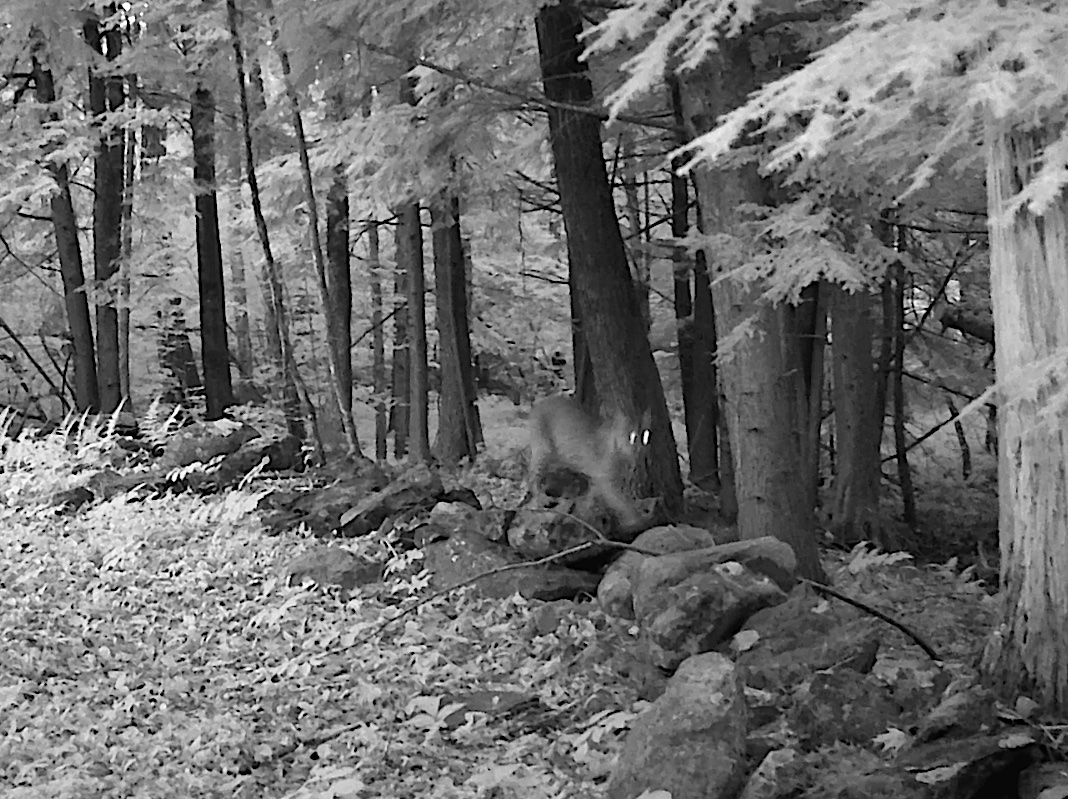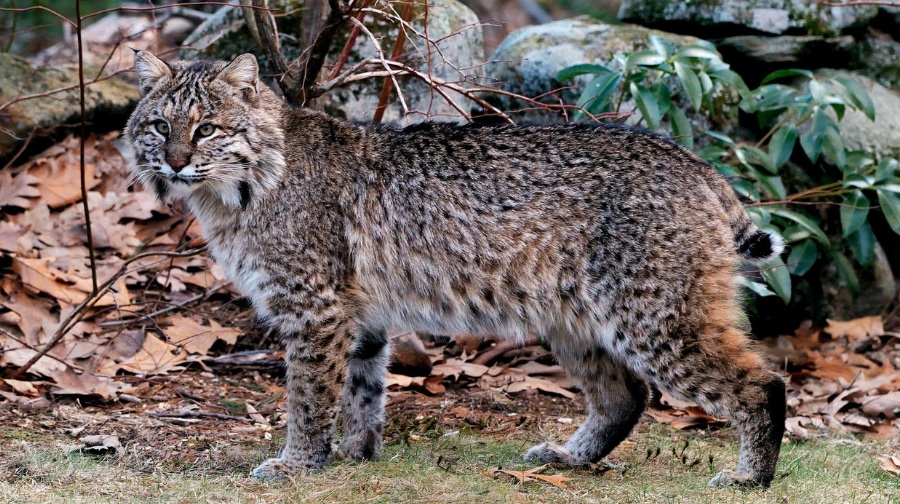
New England residents and visitors love the region’s historic stone walls. They also love the the fact that this region’s now thickly wooded landscape is being re-wilded by creatures like bobcats. These formerly widespread natural predators were locally exterminated because they were a threat to livestock, and those that remained avoided the open landscape of fields and pastures on former farms. But now bobcats are coming back, and stone walls seem to be a part of that story.
Over the years I’ve frequently described the ecological importance of stone walls, based on my own eyewitness accounts of chipmunks, squirrels, feral cats, foxes, human children, turkeys, snakes, and many more. But never have I seen a more dramatic visual proof of the link between animals and walls than the 20-second video below. It shows a bobcat (Lynx rufus) using a low, bouldery stone wall first as a hunting blind and later as an elevated corridor along which it walked while scanning for prey.
This video was obtained and provided by Jeff Hoy. The setting is Lee New Hampshire, a thickly wooded residential town in southern New Hampshire west of Durham. His tree-mounted, infrared wildlife camera, a GardePro, was tripped by motion at dusk on the cool, quiet, and clear solstice night of June 21, 2023. The time was 8:35 PM. The temperature was 59 degrees Fahrenheit (15 degrees C). The ambient background noise was quiet except for distant traffic and the tweets of birds.
At zero seconds, the camera shows the stone-sized head of Lynx rufus moving side to side as it peered over a gap in the wall. From zero to three seconds the bobcat continued to use the wall as a low hunting blind. From three to ten seconds, it comes out of hiding and crosses the wall in order to climb to its crest. From ten to twenty seconds it stealthily walks the wall as a transportation corridor, looking (and presumably listening) in all directions.
I found a good description of bobcat behavior and ecology provided by the Massachusetts Division of Fisheries and Wildlife. The bobcat photo they chose (reproduced below), shows one standing next to a stone wall. This pairing is probably no accident. I suspect that walls and bobcats go together because cats are proficient climbers that need to travel miles per day in search of prey. Walls provide an elevated and stable corridor along which the cats can move while hunting with their acute senses of sight and hearing. Additionally, walls are common habitats for the cat’s principle prey, which are mid-sized to small mammals. By providing both habitat for their prey and features that enhance predatory behaviors, stone walls are probably greatly appreciated by bobcats.

Moving beyond the specifics of bobcats, the stone walls of New England diversify the entire landscape, being an elevated lattice-work of stony drylands in an otherwise moist world. They are similar in composition to the rubble of rock ledges, but they are very different from ledges in being much more ubiquitous, extensive, and linked to one another. With respect to animal behavior, they are barriers separating different habitats, corridors that guide movement, habitats for those living within the pore spaces of walls, and sites for burrows beneath their basal stones. Each partitions the world into two realms: sunny and shaded, uphill and downhill, windward and leeward, and sites of thicker and thinner soils.
If stone walls diversify and enhance the habitat for bobcats, is the same enhancement true for other species? For plants? For our wildlands?